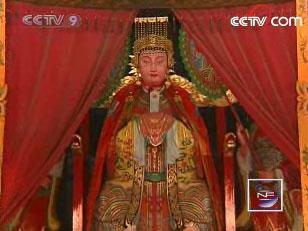Source: CCTV.com
05-20-2008 15:39
 |
However, different from a religion in the ordinary sense, Mazu is a special kind of ideology connected with thropology, religion, folklore, sociology as well as the history of sea commnication overseas Chinese, culture and the development of Fujian and Taiwan. This is the culture of Mazu which has aroused an extensive interest and great attention of Chinese and foreign scholars and is now under integral part of the culture of the Chinese nation and a part of the brilliant civilization of China.
In recent years, there are a number of academic groups, experts and schoolars working on research of Mazu and published special works on the subject in Taiwan, Hongkong and Macao regions and in such countries as Japan, the United States, France, Singapore and Malaysia. The research on the Mazu culture has a great appeal and cohesive force to the Chinese both at home and abroad. Now the achievements in the research on the Mazu culture have become valuable material in the research on the history of navigation, science, overseas Chinese, development of off-shore islands and economic and cultural exchanges with foreign countries as well as the history of folklore and religion of ancient China.
Editor:Liu Fang
